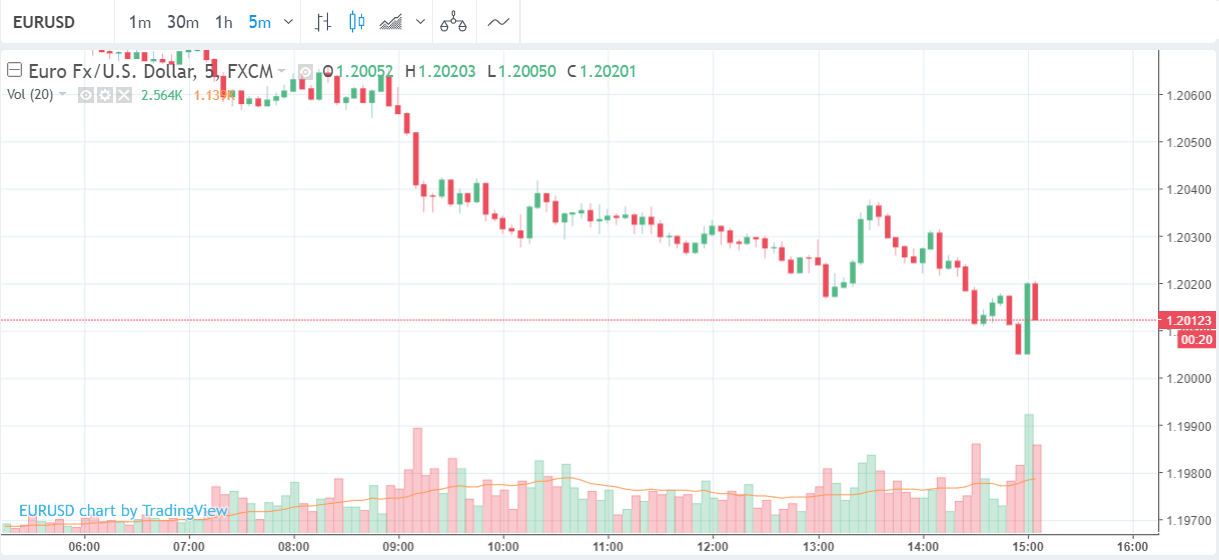US Manufacturing Activity Stalls But Dollar Saved By Higher Prices Paid in April
- Data shows greater than expected stall in manufacturing sector
- Dollar falls initially but then recovers as prices paid subcomponent rises
- Overall analysis seems to point to a neutral interpretation due to prior high level

© Adobe Stock
Manufacturing activity in the US slowed down in April, according to data from the Institute for Supply Management's (ISM) which released its purchasing managers' index, on Wednesday, May 01.
The data showed that according to survey responses from key procurement managers in Manufacturing firms the ISM Manufacturing Index fell to 57.3 in April from 59.3 in March, which was lower than the consensus expected by analysts of 58.3.
Although any score above 50 represents expansion in the sector the decline of two whole points and a point below forecasts was interpreted as a negative sign of growth in the US and the Dollar fell initially - although it made a strong recovery after the initial drop.
EUR/USD rose to 1.2020 from 1.2006 but then fell back down to 1.2013.
GBP/USD rose from 1.3623 to a peak of 1.3640, before also falling back down to 1.3624 - giving up almost all its gains.
The Dollar's volatile loop may have been as a result of the Prices Paid subcomponent of the ISM, which showed a rise to 79.3 from 78.1 in March.
This came as a complete surprise to the market given expectations had been for a marginal decline to 78.0. Prices Paid is an important gauge because of the heightened significance of inflation in the market the moment which remains inexplicably low. Prices Paid measures manufacturing component inflation so it is a useful leading indicator of inflation in the rest of the economy.
Higher inflation encourages the US Federal Reserve (Fed) to raise interest rates, and higher interest rates tend to strengthen the Dollar by attracting greater inflows of foreign capital drawn by the promise of higher returns.
Another important subcomponent of the report was the New Orders category which came out at 61.2 from 61.9 previously. New Orders tends to be a powerful leading indicator of the economy.
The Employment subcomponent dropped to 54.2 from 57.3 when a decline to 57.0 had been forecast, which does not bode well for Non-Farm Payrolls (NFPs) out on Friday as the ISM is often seen as a reliable forward indicator for NFPs.
A score of over 50 in either the headline index or subcomponents is a sign of expansion. A score of around 60 is representative of solid expectations among those surveyed by ISM.
This suggests the Prices Paid component at 79.3 is especially strong in April and may be the reason why the Dollar recovered after initially weakening due to the headline figure.
"The ISM manufacturing index slipped at the start of the second quarter but remains well in expansionary territory," says Katherine Judge, an economist at CIBC, in the reaction to the release.
"We continue to expect tax reform, particularly related to the accelerated depreciation of machinery and equipment will support factory activity this year. The prices paid sub-index moved higher, reaching a level not seen since 2011, something that is likely attributable to the recent rise in the price of oil. Overall, the mixed news on activity and prices shouldn't do much to move yields today," adds the economist.
Get up to 5% more foreign exchange by using a specialist provider to get closer to the real market rate and avoid the gaping spreads charged by your bank when providing currency. Learn more here.





